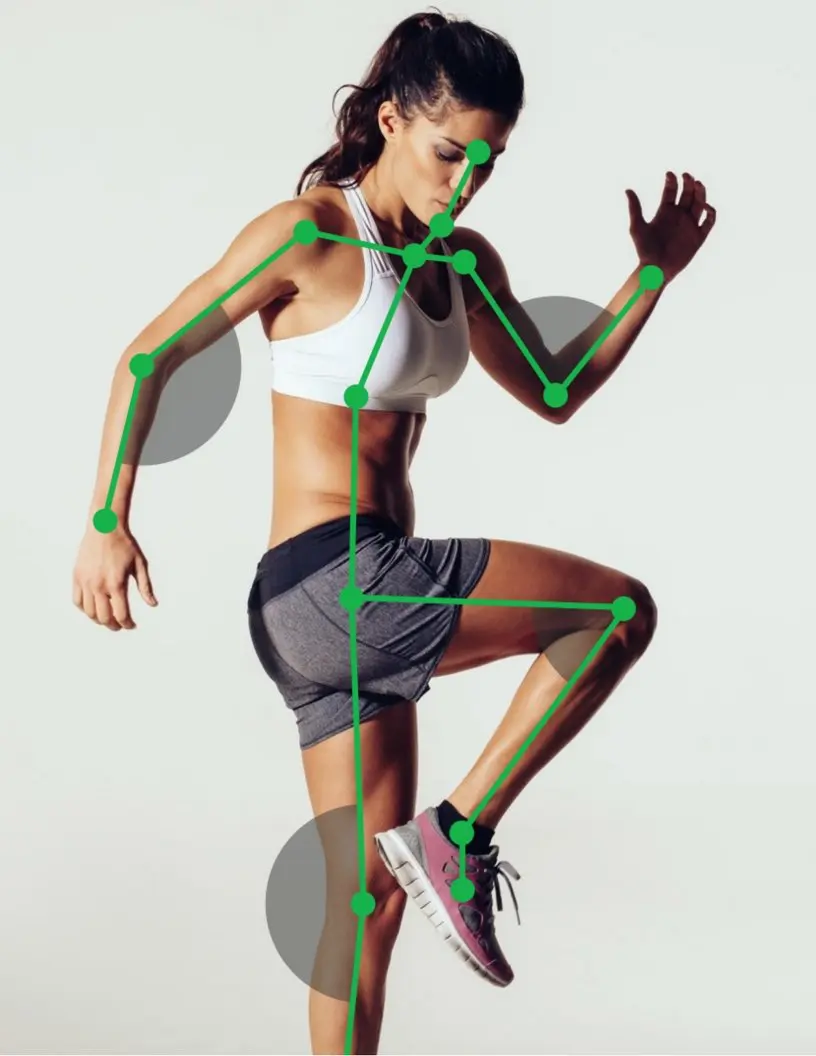

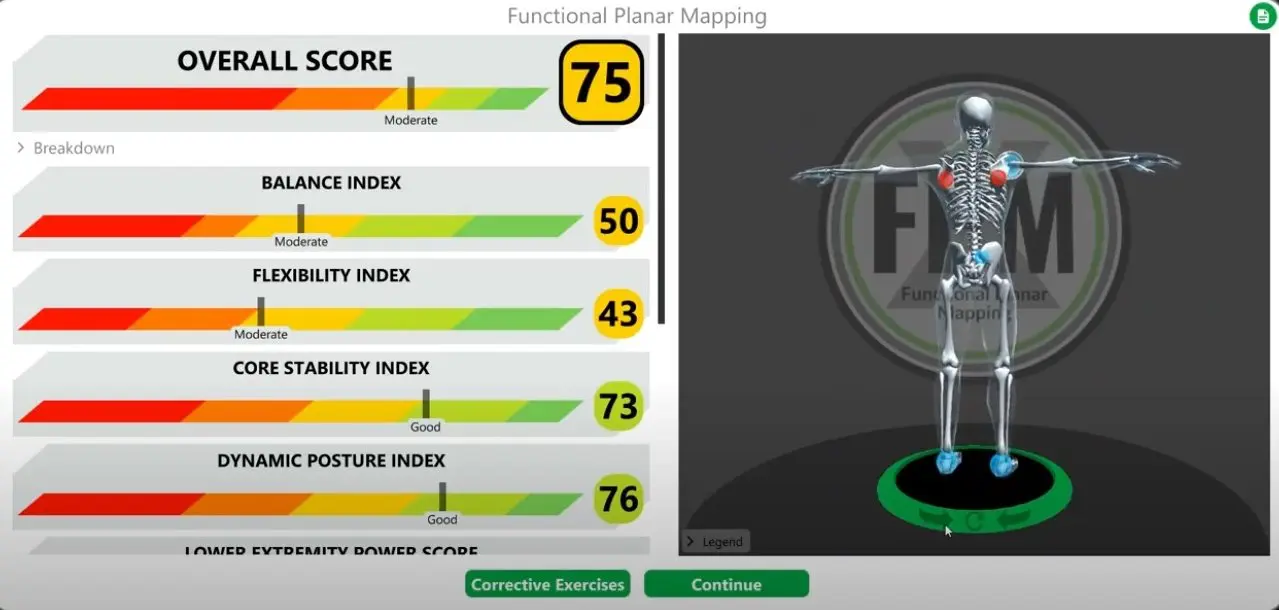
Muscles that are usually treated with trigger point injections include those in your jaw, neck, hip, a deep muscle in your low back, the muscle that extends over your back, your shoulders, the front of your neck, and the sides of your head.
Trigger injections can be used to treat myofascial pain, muscle overuse, chronic musculoskeletal disorders, repetitive strain, and muscle contractions. A trigger point is a painful area of muscle that’s tender when touched or pressed on.
In spite of the fact they originate on that skin area, they can unfortunately cause pain elsewhere in the body. It’s also possible for trigger points to develop in almost any muscle.
Oftentimes, trigger points are related to the piriformis muscle and cause piriformis syndrome in the buttocks. In this condition, the piriformis muscle compresses the sciatic nerve. Consequently, your buttocks and the back of your leg can feel painful or numb.
A pain management professional or doctor can use trigger point injections to inject medications into a trigger point. These injections have the potential to treat a variety of conditions, such as neck pain, back pain, shoulder pain, arm pain, leg pain, myofascial pain syndrome, and even fibromyalgia.
Trigger injections do not require any preparation on your part. Before getting a procedure, it’s important to consult your provider about current medications, symptoms, and overall health.
Local anesthetics and corticosteroids are two types of medication that may be used. Local anesthetic numbs the area and corticosteroids reduce inflammation and pain, with injections lasting only a few minutes.
It’s likely you will experience some pain when your pain management specialist locates a trigger point manually before injecting medication. When the needle and medicine are inserted, you may experience a stinging or burning sensation. If the needle tip touches the trigger point, you may feel a brief increase in pain. Inserting the needle correctly causes discomfort, but it also serves as a sign that the needle has been appropriately inserted.
Sometimes, healthcare providers combine injections with physical therapy or massage therapy. This means the injections are more effective and can reduce pain for a longer period of time.
An injection may be right for you if over-the-counter pain medications, heat therapies, massages, myofascial releases, and physical therapy have not helped relieve your trigger point pain. Trigger injections relieve pain, reduce inflammation, improve range of motion, and improve muscle function.
When over-the-counter pain medications and physical therapy won’t relieve pain, trigger point injections can provide relief. As well as improving muscle function, injections also increase range of motion.
Complications and side effects are rare, as trigger injections are very safe. There are rarely any bodily reactions. An injection may cause swelling beneath the skin, making a dent and causing minor pain or bleeding at the injection site for some patients. Any side effects should subside within a few days or less — if they even occur.
In some cases, trigger points can be resolved with just one injection. These injections loosen muscles and reduce inflammation, allowing for the treatment of many conditions such as minor trauma with just one treatment. As a result, the conditions should resolve within a couple of days or less.
Chronic conditions such as fibromyalgia or myofascial pain can cause trigger points to recur, requiring regular injections. Depending on your circumstances, you may need repeat injections over time, whether it’s for one issue or another. Your pain level and response to treatment will determine the number of injections you need.
Below are some helpful questions and answers regarding trigger point injections.
A range of options are available at Wellness and Pain to treat your pain with trigger injections. We offer conservative treatments, routine visits, and minimally invasive quick-recovery procedures. We can keep you free of problems by providing lifestyle education and home care advice to help you avoid and manage issues, quickly relieving the conditions inhibiting your life by using cutting-edge injection techniques.
At Wellness and Pain, we personalize patient care plans based on each patient’s condition and unique circumstances to relieve pain, improve mobility and mental space, and improve your overall health.
...
...
...
...
...
...
...
Back pain specialists alike understand how common back pain and discomfort are. It’s important to ...
A narrowed or blocked artery is a very common condition, and it simply refers to poor blood circulation, which a blood circulation doctor specialist can quickly diagnose. A variety of symptoms can result from less blood flow to affected areas. A person can experience pain, numbness, or tingling in their feet and in their arms.
It’s common for people to feel fatigued, have heavy legs, or have an overall sense that something is wrong that they cannot fully explain. The ability to move freely and exercise effectively is often limited by unexplained aches and pains for people who are actively trying to improve their fitness. But why?
A blood circulation doctor specialist will tell you some of the valves in your veins aren’t working properly. A valve’s function is essential in preventing trapped blood in the legs and feet, as well as returning that blood to your heart.
Your body’s blood circulation all comes down to your veins and your heart, which pumps blood throughout the body through its four chambers — two atria and two ventricles. During contractions and relaxations, your heart does the job it’s made to do.
Blood is pumped into your arteries when the heart contracts, carrying it to every part of your body, with the same blood cells returning to the heart through your veins. Your circulatory system does more than supply cells with oxygen and nutrients and remove waste products. It also controls body temperature and blood pressure.
A blood circulation doctor specialist can see why you’re having circulation issues by assessing your problems through modern-day testing and a thorough review of your specific symptoms.
Different areas of your body may experience different symptoms from poor circulation. It can cause coldness and numbness in your hands and feet, swelling in your legs or arms, slow-healing sores on your body, changes in your skin color (paleness or blueness), muscle cramps, fatigue, or shortness of breath.
If you experience any of these symptoms, you should visit a blood circulation doctor specialist to get a proper diagnosis and the right treatment. You can improve your circulation by doing a number of things. In fact, most people with poor circulation live longer and healthier lives when they seek treatment. The catch? This is only the case when they seek it sooner rather than later.
Your blood circulation health can be affected by a number of factors. It’s common for people to experience stiffer and narrower arteries as they age. This obstruction of the flow of blood through your arteries can cause high blood pressure and heart disease.
Moreover, women have a higher risk of high blood pressure than men. As a result of estrogen’s role in causing stress to cause the arteries to tighten, women are more likely to experience artery problems.
It goes without saying that diet and activity also play significant roles. They affect whether you may experience poor blood circulation. Saturated fat and cholesterol can build up in the arteries, narrowing them and making blood flow more difficult. The arteries are kept healthy by exercise, which keeps them flexible and open, so a sedentary lifestyle (severe lack of exercise) must be avoided. As a side note, obesity and excess weight put additional strain on the heart. This also leads to high blood pressure.
It’s also probably no surprise that smoking damages the arteries and makes it more difficult for blood to flow through those arteries. Diabetes can also damage nerves and blood vessels, which may make blood flow more difficult. These last two are very important, as any blood circulation doctor specialist will affirm.
No one can cure poor blood circulation. However, you can manage it and prevent problems in a number of ways. If you are a smoker, quitting is the first step to keeping your blood pressure and cholesterol under control.
Managing your diabetes properly can also be very helpful. It is also a good idea to lose weight, if you are overweight or obese. Maintaining a healthy diet, exercising regularly, and taking medications as directed by your doctor are also important.
Nonetheless, the first step to finding relief is to have a venous mapping ultrasound performed by a trustworthy blood circulation doctor specialist. A vein mapping ultrasound has no side effects, and there is no pain or radiation.
This quick, non-invasive procedure can determine if you have dilated or stretched-out veins in your legs. These veins may cause pain, poor blood circulation, and other symptoms. It helps identify medical conditions and guide treatment. It creates a “map” of the blood vessels in your body.
Ultrasounds send sound waves through your blood vessels. Then they convert them into images. These images show whether your veins are dilated or stretched. It measures the width of the veins and reflux, which is the flow of blood in the wrong direction.
You are not alone. Poor blood circulation takes a toll on daily living. Discovering the cause doesn’t have to cause you trouble anymore. Chronic pain sufferers tend to see multiple doctors to figure out what’s causing their pain.
Blood circulation treatment options are available at Wellness and Pain. Our team of doctors and specialists offers minimally invasive, quick-recovery options and surgery. We can help keep you free of blood circulation problems by providing lifestyle education and home care advice to help you avoid and manage problems, quickly relieving the pain.
We personalize patient care plans based on each patient’s condition and unique circumstances. Together, we can increase mobility, prevent further injuries, and improve your overall health.
Massage therapy, simply known as “getting a massage,” involves applying pressure to the soft tissues of the body. This method promotes relaxation, improves blood flow, and reduces pain.
For those looking to incorporate a safe and effective way to improve their health and well-being, massage therapy may be an excellent choice.
Massage therapy can safely and effectively treat a variety of conditions. It does wonders for things like muscle pain, edema, muscle spasms, pain patterns, surgery recovery, and so much more.
Additionally, it can improve tissue healing, strengthen your immune system, relax you before a surgery, reduce stress and anxiety, reduce inflammation, increase blood flow, help you lose weight, improve digestion, boost your metabolism, alleviate constipation, bloating and flatulence, and reduce cortisol (a stress-induced hormone that increases appetite).
Massage therapy has an interesting history. It’s been used by cultures all over the world for centuries as one of the oldest healing arts. Throughout ancient Egypt, China, as well as Greece and Rome, it dates back thousands of years.
Massage therapy is safe and effective. Not only that, but it complements a variety of conditions as an alternative medicine. Using a specific set of techniques, a “modality” is a specific type of massage therapy. In fact, this treatment has many different modalities, each with its own set of advantages.
A massage therapy patient’s specific needs can be met by using different massage modalities. There are many types, including:
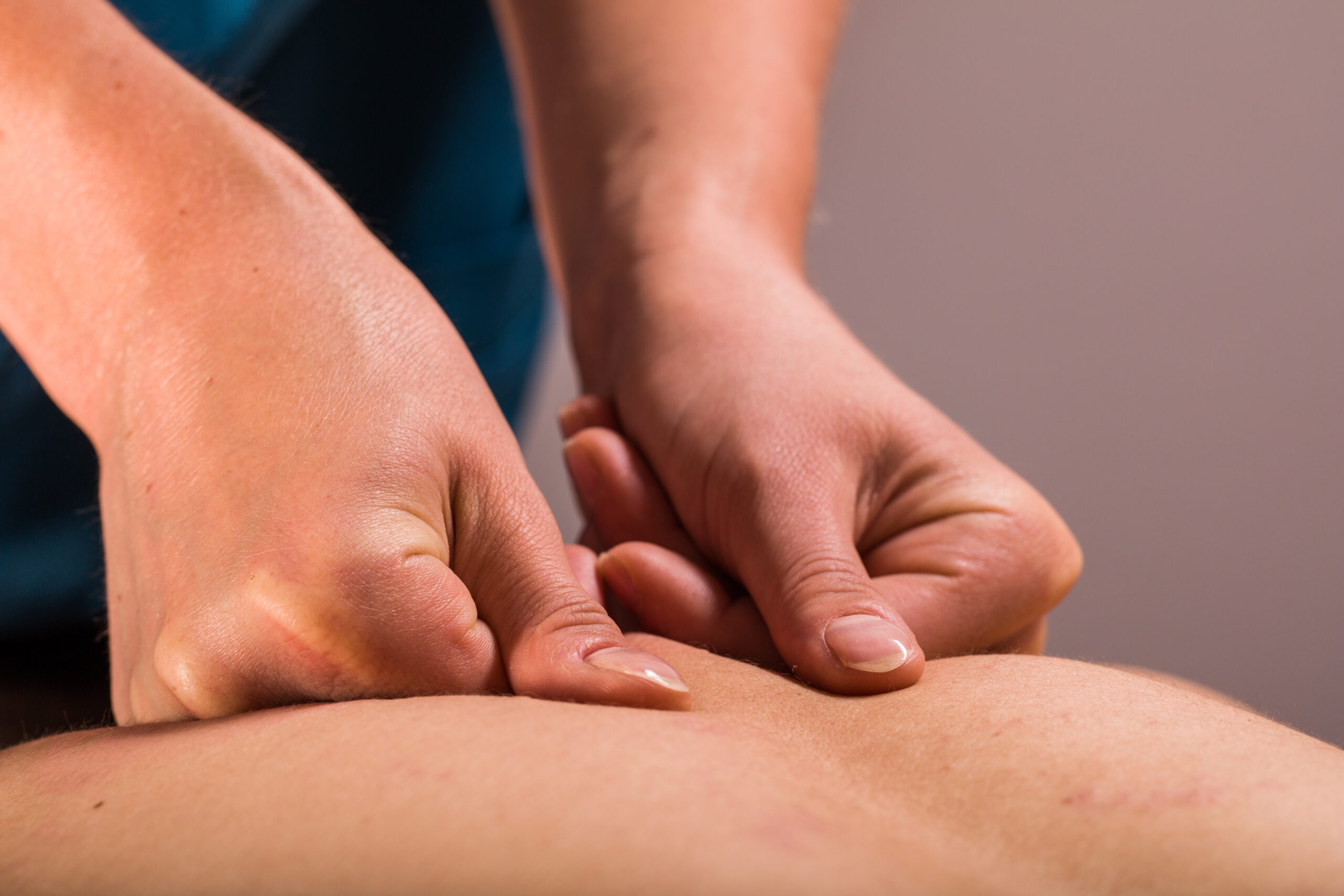
At Wellness and Pain, we offer a select set of therapies that are appropriate for our patients’ individual circumstances, pain management problems, and massage therapy needs.
In massage therapy, touch is used to improve health and well-being as an alternative medicine. Muscle, tendons, and other areas of your body are all treated through manual application of pressure.
As a whole, this treatment helps to release endorphins. In turn, endorphins relieve pain and boost your mood. Your pituitary glands and hypothalamus release endorphins in response to pain or stress. These are pain relievers and mood boosters. Additionally, you can stimulate them through a variety of activities, including exercise, listening to music, and spending time outside.
Massage therapy, however, has been shown to increase endorphin levels in the body and is effective in helping with pain and stress. Through interaction between your neuron receptors and endorphins, massage therapy reduces the perception of pain by stopping pain signals from reaching the brain.
The effect of endorphins on one’s mood is also positive. In the brain, they increase levels of dopamine and serotonin, two neurotransmitters connected to happiness and well-being.
A range of massage therapy options are available at Wellness and Pain. We offer conservative treatments, routine visits, and minimally invasive, quick-recovery procedures. Together we can keep you free of problems by providing lifestyle education and home care advice to help you avoid and manage issues, quickly relieving the conditions slowing your life by using cutting-edge massage therapy techniques.
We personalize patient care plans based on each patient’s condition and unique circumstances to relieve pain, improve mobility and mental space, and improve your overall health.
Massage can be helpful at different times and stages of care for various life events: trauma recovery, pain management, weight-loss. Depending on the ailment and/or the desired change event, the combination of massage modality and frequency can aid in the return of optimal function.
...
...
...
...
...
...
...
...
...
Back pain specialists alike understand how common back pain and discomfort are. It’s important to ...
Symptoms of sciatic pain include burning pain from your lower back into your buttocks and can radiat...
Acupuncture therapy is a form of traditional Chinese medicine that involves inserting thin needles into the skin at specific points on the body. Each point corresponds to an organ, emotion, or sense. A well-rounded acupuncture treatment plan can target these in unique ways other medicines can’t.
In addition to treating pain, acupuncture treatment is used for anxiety, depression, insomnia, headaches, migraines, nausea and vomiting, menstrual cramps, fertility problems, smoking cessation, and weight loss.
Scientists do not fully understand the exact healing mechanism behind acupuncture therapy, but they believe it involves a combination of factors. One of those things is the release of endorphins, which relieve pain. Stimulating the nervous system is another, which can also help regulate mood, pain, and other bodily functions. It also helps you relax and relieve stress.
Although acupuncture treatment is generally safe, make sure you find a licensed acupuncturist in your state. It’s not uncommon for patients to endure side effects, especially since needles can cause mild pain or soreness.
Certain patients can also experience bruising, dizziness, lightheadedness, and nausea. A professional acupuncturist can help, as tailored and customized treatment plans are known to provide the best solutions. There are a variety of health problems acupuncture therapy can treat, and it’s usually very safe and effective.
According to Chinese medicine, energy flows through your body. Many believe disrupted “qi” (pronounced “chee”) causes imbalances in the body’s energy. By pressing sterile needles on acupuncture points throughout the body, some forms of acupuncture therapy restore qi balance. Meridians — also called energy-carrying channels — consist of hundreds of acupoints in the body.
By using needles, your body reacts, rebalances, or releases natural chemicals, including endorphins, your body’s own natural painkillers and neurotransmitters.
There’s no one-size-fits-all approach when it comes to acupuncture treatment. There are some people who feel nothing at all, while others feel a dull ache or mild pricking. Others feel tingling or buzzing or feel warm or heavy. Acupuncturists sometimes twirl or move needles after inserting them. You might feel a slight increase in sensation at times.
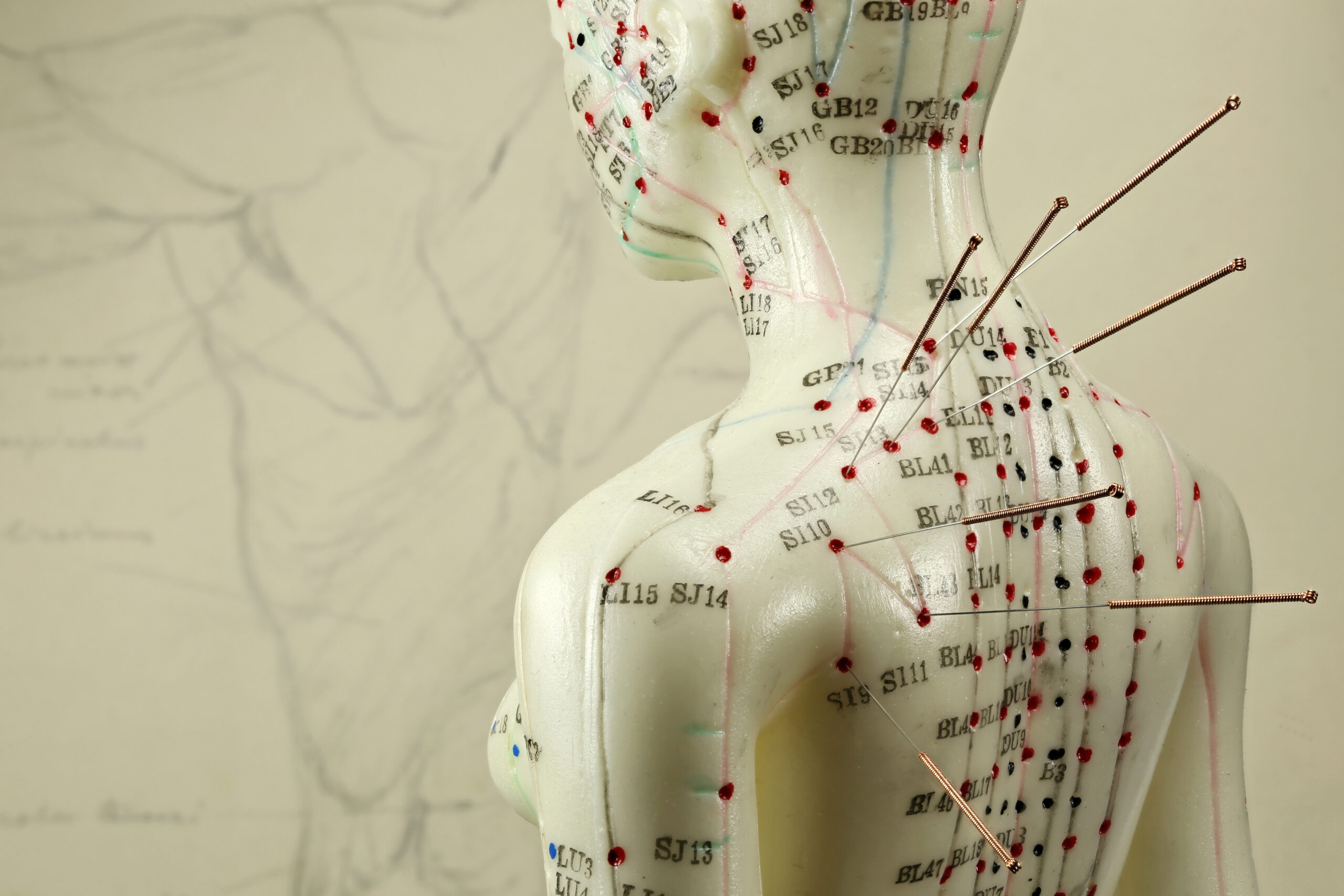
Acupuncture is mild and tolerable for most people. Be sure to tell your acupuncturist if you’re feeling pain. To make the treatment more comfortable, they may adjust the needles or use a different size of needle or technique.
You might feel relaxed or energized after acupuncture therapy. Pain or other symptoms also seem to be lessened. Although acupuncture’s effects can vary from person to person, most people find it to be a safe and effective treatment.
There are many different types of acupuncture therapy, each with its own approach and philosophy. Traditional Chinese acupuncture is the most common type of acupuncture treatment. Acupuncture can unblock and balance qi, which leads to improved health and wellbeing.
Korean hand acupuncture treatment focuses primarily on the hands. By stimulating the points on the hands, Korean acupuncturists believe they can affect the entire body.
Auricular acupuncture focuses on the ear as part of the treatment. By stimulating points on the ears, auricular acupuncturists are able to affect the entire body by using reflexology.
While Japanese acupuncture uses the same principles as traditional Chinese acupuncture, it uses a different approach. In Japanese acupuncture, small needles are used and gentle stimulation is used. Besides acupressure and moxibustion, they also use other techniques.
In electroacupuncture, electrical stimulation enhances the effects of acupuncture by passing a small current between pairs of acupuncture needles. Pain that cannot be treated with other forms of treatment is often treated with electroacupuncture.
Other kinds of acupuncture therapy may include:
Acupuncture therapy can help with a lot of health problems. It’s usually used for chronic (long-term) pain like arthritis, back pain, neck pain, shoulder pain, knee pain, headaches, migraines, sports injuries, jaw pain, sinus congestion and facial pain, neuropathy, and menstrual cramps.
As well as alleviating chemotherapy side effects in cancer patients and reducing nausea during pregnancy, acupuncture treatment may also help with infertility, autoimmune diseases, colds and flu, irritable bowel syndrome, menopausal hot flashes, insomnia, anxiety, and depression.
Getting a ride home is always wise if you’re getting acupuncture therapy for the first time. If that’s not possible, try to rest for five to ten minutes before driving home. Your practitioner may advise you to take it easy following each session.
Your body may need a number of treatments depending on how severe your condition is. Most patients have an appointment once a week. Some people get treatment more often, while others get it less frequently. Our acupuncturists can recommend the right schedule for each patient.
A range of acupuncture therapy options is available at Wellness and Pain. We offer conservative treatments, minimally invasive quick-recovery procedures, and surgery. With these, we can keep you free of problems by providing lifestyle education and home care advice to help you avoid and manage issues, quickly relieving the conditions inhibiting your life by using state-of-the-art acupuncture treatment.
We personalize patient care plans based on each patient’s condition and unique circumstances to relieve pain, improve mobility and mental space, and improve your overall health.
...
...
...
...
...
...
...
...
...
Back pain specialists alike understand how common back pain and discomfort are. It’s important to ...
Symptoms of sciatic pain include burning pain from your lower back into your buttocks and can radiat...
Once you know what’s causing your swollen legs and painful symptoms, you can control your condition and live a healthier life through swollen leg treatment. Developing a treatment plan with your pain management specialist or doctor is crucial.
What’s the amount of time you spend standing versus sitting? Do you often feel tired, swollen, or heavy in your legs? Do you have difficulty walking or climbing stairs? It could be a blood flow and circulation issue that’s causing the problem. A comprehensive lifestyle and body treatment for your legs may be the answer to your pain and discomfort.
First, it’s important to determine what is causing your pain. Blood vein damage — specifically in your vein valves — cannot be reversed with treatment. However, you can have a much better quality of life if you work on reversing your symptoms with the right help from a pain management specialist. Chronic venous insufficiency cannot be cured, but with proper changes and treatment, you can manage your condition reasonably and safely.
Symptoms of chronic venous insufficiency include swollen legs and heavy legs syndrome, both of which require swollen leg treatment. It’s essential to have the right plan in place.
Blood flows back to the heart through your veins when it’s pumped through your body, and it’s pumped upward against gravity. Despite the elasticity of veins and muscles surrounding them, the valves inside your veins prevent blood from flowing backward, serving as a crucial tool in the body’s circulatory system. Your body circulates blood back to your heart through these vascular valves in both legs.
As vessels stretch, those valves cannot work as efficiently. Blood and waste products can pool in your legs, making them heavy, tired, or swollen. The valves in your veins may not function properly if they’ve lost elasticity over time.
Several problems, either individually or altogether, can cause chronic venous insufficiency, swollen legs, and heavy legs. Among them are heredity, aging, being a woman, pregnancy, peripheral arterial disease (PAD), overtraining syndrome (OTS), lumbar spinal stenosis, excess weight, sitting or standing for long periods of time, smoking, varicose veins, or restless legs. A pain management treatment plan can be helpful in this situation.
Despite the unpleasant symptoms caused by venous insufficiency, most of them are mild and can be controlled through a swollen leg treatment plan. The pain or muscle cramps may be accompanied by heaviness, itching, prickling, or tingling, as well as swelling. It’s possible for symptoms to worsen in hot weather.
Patients who have an insufficient venous system may develop varicose veins or damaged veins on the surface of their skin. Blood clots can form in areas where blood accumulates in some individuals, causing skin infections.
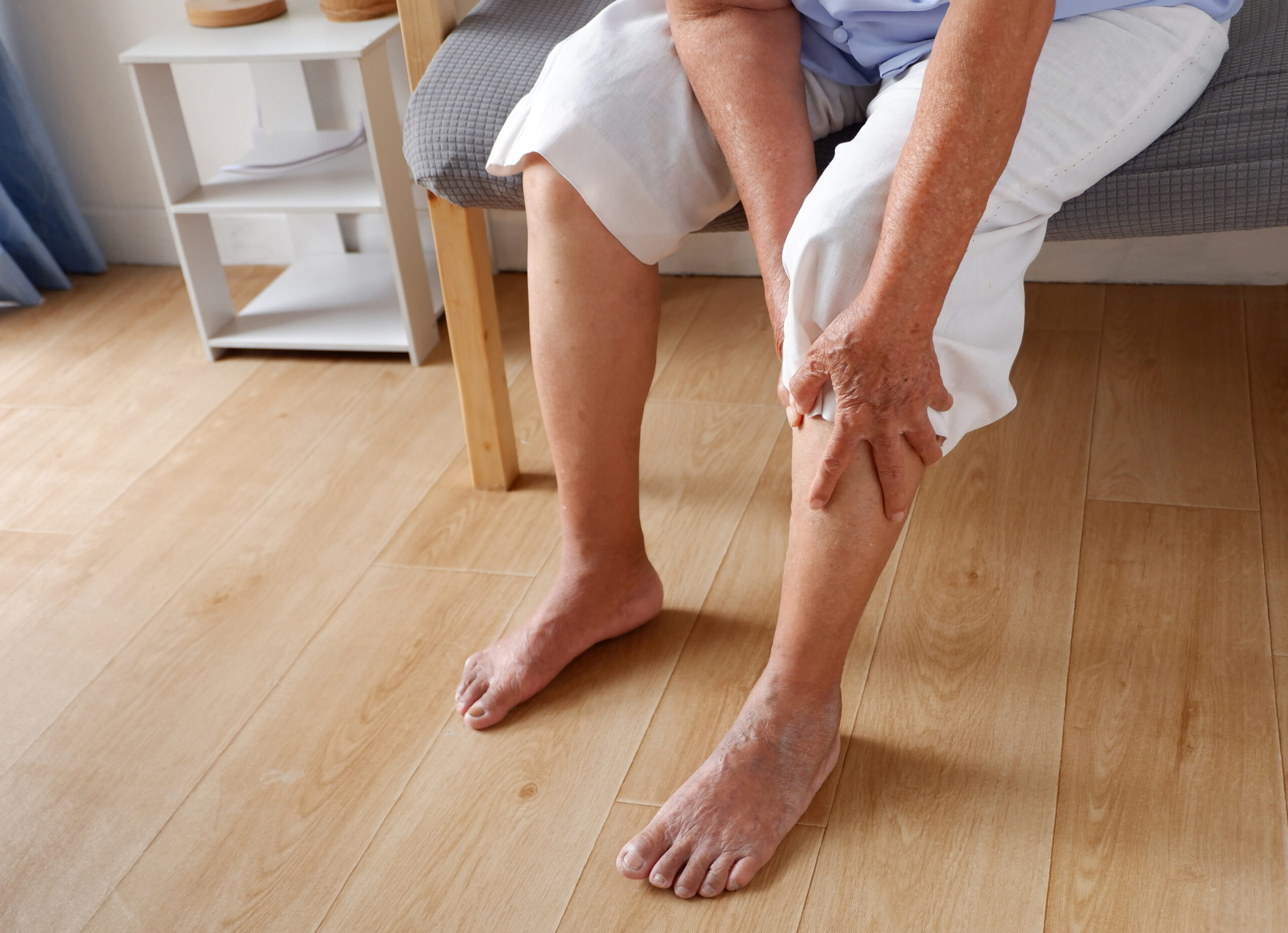
Capillaries in your legs will burst if you don’t treat the pressure and swelling. Your skin may turn reddish-brown, particularly around your ankles. Ulcers and swelling can result from this. Ulcers like these are difficult to heal. Further complications can also occur when they become infected.
It’s always important to get a medical evaluation for swollen legs. The first time a patient consults a pain management specialist, health professional, or doctor is the beginning of a great start to a healthier you — so you can find freedom from the pain.
Through implementing a calculated swollen leg treatment plan, aided by your pain management specialist and daily lifestyle choices at home, you can relieve pain and discomfort:
Swollen legs are often difficult to treat with self-care at home if you’re not checking in with a pain management specialist. To successfully treat chronic venous insufficiency, you should consult a health professional.
Heavy legs syndrome can affect your quality of life if you don’t seek out the right swollen leg treatment. The news isn’t all bad, though. You can get stronger in the face of this health problem. You should consult a pain management specialist or doctor if symptoms persist over the long term.
It’s our goal to get you moving on your pain-free journey by reviewing your pain and symptoms, applying the right treatment, reviewing your medical history, and performing any necessary tests. By showing how blood flows through your veins, an ultrasound and other tests can diagnose your swollen legs. You’ll learn everything you need to know about vessel ablation, massage therapy, acupuncture, intravenous hydration, and so much more.
A range of options are available at Wellness and Pain for swollen leg treatment. Here, we offer conservative treatments, routine visits, and minimally invasive quick-recovery procedures. We can keep you free of problems by providing lifestyle education, home care advice, and a comprehensive plan to help you avoid and manage issues, quickly relieving the conditions inhibiting your life by using cutting-edge techniques.
We personalize patient care plans based on each patient’s condition and unique circumstances to relieve pain, improve mobility and mental space, and improve your overall health.
Vessel ablation – formally known as radiofrequency ablation (RFA) – is a minimally invasive and ...
Pain including muscle tension, back and shoulder pain, Repetitive stress injuries, Headaches, Neck p...
For massage and acupuncture this is conservative, holistic approach for treating musculoskeletal cau...
...